
Warcraft III: Reign of Chaos is a high fantasy real-time strategy computer video game developed and published by Blizzard Entertainment released in July 2002. It is the second sequel to Warcraft: Orcs & Humans, after Warcraft II: Tides of Darkness, the third game set in the Warcraft fictional universe, and the first to be rendered in three dimensions. An expansion pack, The Frozen Throne, was released in July 2003. Warcraft III is set several years after the events of Warcraft II, and tells the story of the Burning Legion's attempt to conquer the fictional world of Azeroth with the help of an army of the Undead known as the Scourge, led by fallen paladin Arthas Menethil. It chronicles the combined efforts of the Human Alliance, Orcish Horde, and Night Elves to stop them before they can corrupt the World Tree.
The Dark Eye is a German tabletop role-playing game with a high fantasy theme created by Ulrich Kiesow and launched by Schmidt Spiel & Freizeit GmbH and Droemer Knaur Verlag in 1984. It is the most successful role-playing game on the German market, outselling Dungeons & Dragons. Many years of work on the game have led to a detailed and extensively described game world.

Warcraft III: The Frozen Throne is the expansion pack for Warcraft III: Reign of Chaos, a real-time strategy video game by Blizzard Entertainment. It was released worldwide on July 1, 2003, for Microsoft Windows and Mac OS X. The Frozen Throne builds upon the story of Reign of Chaos and depicts the events after the main game's conclusion. The single-player unfolds from the perspective of two new protagonists—the Night Elf warden Maiev Shadowsong and the Blood Elf prince Kael'Thas—as well as returning protagonist Arthas Menethil. Additionally, the expansion contains Act I of a separate Horde campaign that is independent from the main storyline with Blizzard releasing Acts II and III via patch in December 2003, taking in player feedback of Act I when developing these chapters.

Warhammer: Shadow of the Horned Rat is a single-player fantasy real-time tactics computer game based upon the Warhammer Fantasy Battle table-top game and miniatures. It was developed and published by Mindscape, and released in November 1995 for Microsoft Windows, and on PlayStation in November 1996. The game's story takes place within the Warhammer Fantasy world setting, and focuses on players managing a group of mercenaries, who take on work for various clients but become involved in stopping a plot by the Skaven. The game's main focus is on battles that feature a mixture of medieval warfare and fantasy elements, using a variety of units based upon those from within the Warhammer setting.

Lineage II is a massively multiplayer online role-playing game (MMORPG) for Windows and the second game in the Lineage series. It is a prequel to Lineage and is set 150 years before the first game. It has become popular since its October 1, 2003 launch in South Korea, reporting 40,027,918 unique users during the month of March 2007. To date, the game has been played by more than 94 million users from all over the world.
Birthright is a Dungeons & Dragons campaign setting that was first released by TSR in 1995. It is based on the continent of Cerilia on the world of Aebrynis, in which the players take on the role of the divinely-empowered rulers, with emphasis on the political rulership level of gameplay. The setting revolves around the concept of bloodlines: divine power gained by heroes and passed on to their descendants. Characters with a bloodline create an aura of command known as Regency, which is measured in the game using regency points or RP. Using regency, characters acquire a domain composed of provinces and holdings. The development of these domains is as much a part of the game as development of the characters. The game uses three-month domain turns to model actions of rulers over nations in much the same way as Dungeons & Dragons uses combat rounds to simulate time to model the characters' actions in battle. In 1996, Birthright won the Origins Award for Best Roleplaying Supplement of 1995.
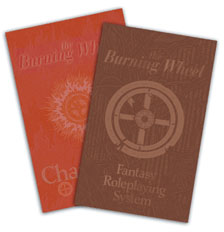
The Burning Wheel is a fantasy tabletop role-playing game independently written and published by Luke Crane. The game uses a dice pool mechanic for task resolution and a character generation system that tracks the history and experiences of new characters from birth to the point they begin adventuring.
Midnight is a campaign setting for the Dungeons & Dragons role-playing game, released under the Open Gaming License. It was published by Fantasy Flight Games from 2003 to 2009.
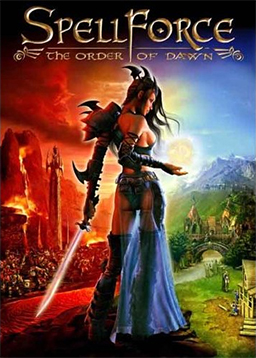
SpellForce: The Order of Dawn is a 2003 real-time strategy and role-playing video game, developed by Phenomic Game Development and published by Encore, Inc for Microsoft Windows. First released in Europe on November 11, 2003, the game takes place within a high-fantasy world in the years following a devastating cataclysmic event, with the game's main campaign focusing on the plight of an immortal warrior who seeks to investigate growing troubles amongst some of the islands that have formed.

SpellForce 2: Shadow Wars is a 2006 real-time strategy and role-playing video game, developed by Phenomic, published by JoWooD Productions, and released for Microsoft Windows in 2006. The game takes place after the events of 2003's SpellForce: The Order of Dawn, with players taking on the role of an immortal warrior known as "The Soulcarrier", who seeks aid to liberate his homeland from invaders, only to be drawn on a quest to defeat a powerful alchemist responsible for creating the immortality of the warrior and his people.
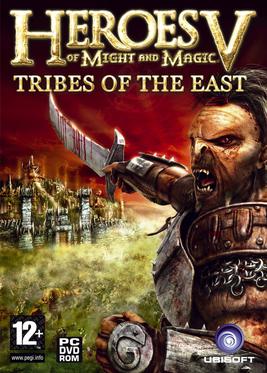
Heroes of Might and Magic V: Tribes of the East is the second expansion pack to the turn-based strategy game Heroes of Might and Magic V and the first stand-alone expansion pack released for the fifth series. It was developed by Nival Interactive and was released by Ubisoft in 2007.
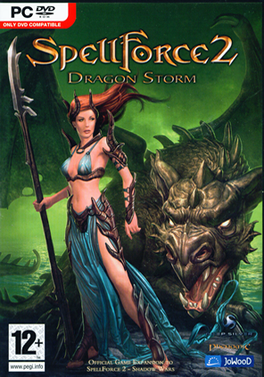
SpellForce 2: Dragon Storm is a 2007 expansion pack developed by Phenomic for the real-time strategy and role-playing game SpellForce 2: Shadow Wars, released in 2006. The expansion features a new story campaign set after the events of the main game, in which players assume the role of an immortal warrior recruited into the Shaikan who finds themselves searching for one of its legendary members, only to discover a new threat that endangers the world of Eo. Along with the new story campaign and an additional skill tree for the main character, players can also build up a base and units based on a new Shaikan faction.
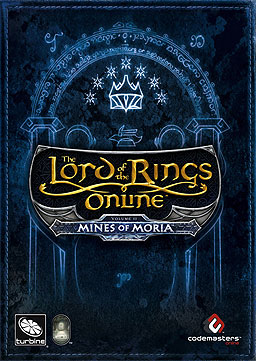
The Lord of the Rings Online: Mines of Moria is the first expansion pack for the massively multiplayer online role-playing game The Lord of the Rings Online released on November 18, 2008. It added the new game regions of Moria and Lothlórien, two new character classes and a new Legendary Items system. Level cap was raised to 60 and the main storyline was extended by six books of the new Epic Volume II.
The half-elf is a humanoid race in the Dungeons & Dragons fantasy role-playing game, one of the primary races available for player characters, and play a central role in the narratives of many setting worlds of the game. As the offspring of humans and elves they are known as "half-elves" among humans and in sourcebooks, and as "half-humans" among elves.

Elven Legacy is a turn-based strategy video game developed by 1C:Ino-Co and published by Paradox Interactive. Released in Russia in 2007 and elsewhere in 2009 for Microsoft Windows, the game is a sequel to Fantasy Wars. On October 11, 2011, Virtual Programming released Elven Legacy Collection, which includes the original game and its three expansion packs, for Mac OS X.

The Lord of the Rings: War in the North is a 2011 action role-playing hack and slash video game developed by Snowblind Studios and published by Warner Bros. Interactive Entertainment for PlayStation 3, Xbox 360, and Microsoft Windows. An OS X port was developed and published by Feral Interactive in 2013. It is the first video game based on both J. R. R. Tolkien's 1954 high fantasy novel The Lord of the Rings and Peter Jackson's film trilogy adaptation released in 2001, 2002 and 2003. This is because, until 2009, Vivendi Universal Games, in partnership with Tolkien Enterprises, held the rights to make games based on Tolkien's literary works, whilst Electronic Arts held the rights to make games based on the New Line Cinema films. In 2009, WB Games acquired the rights for both intellectual properties.
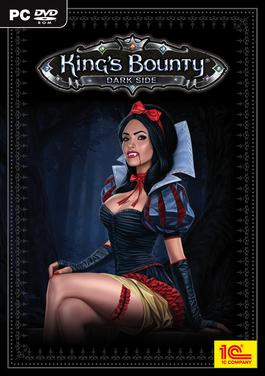
King's Bounty: Dark Side is a strategy video game developed for Microsoft Windows by 1C-Softclub and published by 1C Company. The game was released on August 14, 2014. It is a standalone installment in the King's Bounty series.
SpellForce is a real-time strategy and role-playing series created by Phenomic and currently owned by THQ Nordic. The first release was published by JoWooD Productions and Encore Software in 2003 and THQ Nordic in 2017.

SpellForce 3 is a 2017 video game developed by Grimlore Games and published by THQ Nordic. It was released for Microsoft Windows on 7 December 2017. SpellForce 3 is the third full and the ninth overall release in the SpellForce video game series. It is the first entry in the series since 2014's SpellForce 2: Demons of the Past. The plot serves as a prequel to the first game, depicting events that lead to the creation of The Circle, the group of mages whose actions were the basis for The Order of Dawn.

In the Dungeons & Dragons role-playing game, Corellon Larethian is the leader of the elven pantheon, and the deity of Magic, Music, Arts, Crafts, Poetry, and Warfare. Corellon is also considered a member of the default D&D pantheon. Corellon is the creator and preserver of the elven race, and governs those things held in the highest esteem among elves. Corellon's symbol was originally a crescent moon; in the 4th edition Corellon's symbol is a silver star on a blue field.














